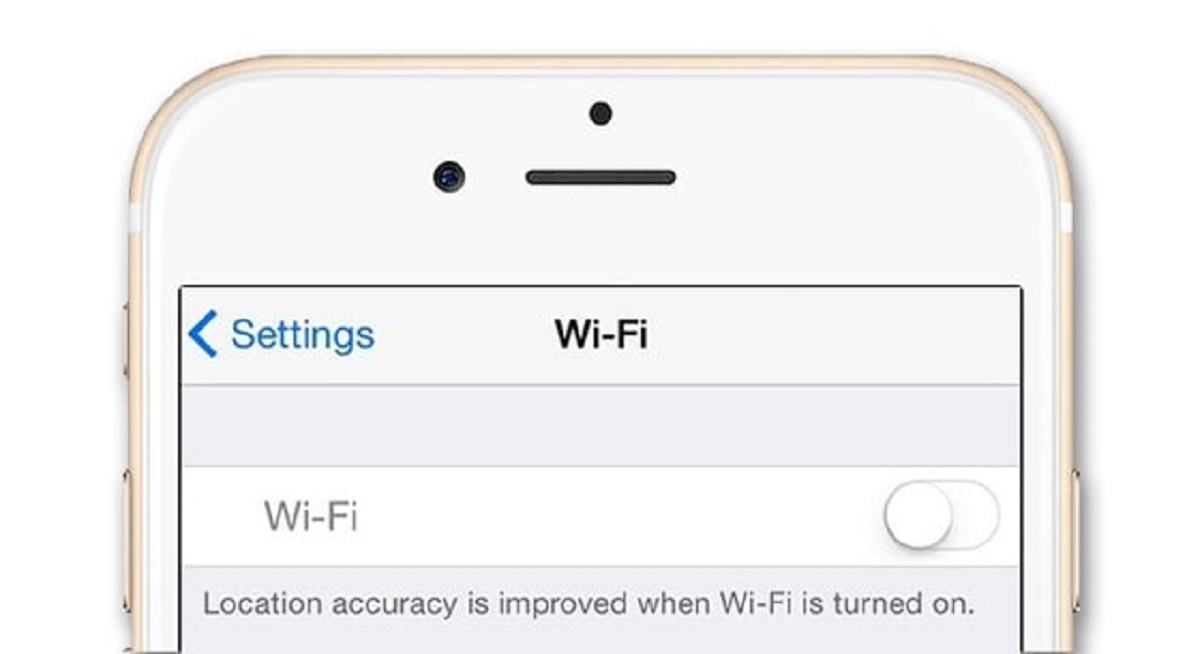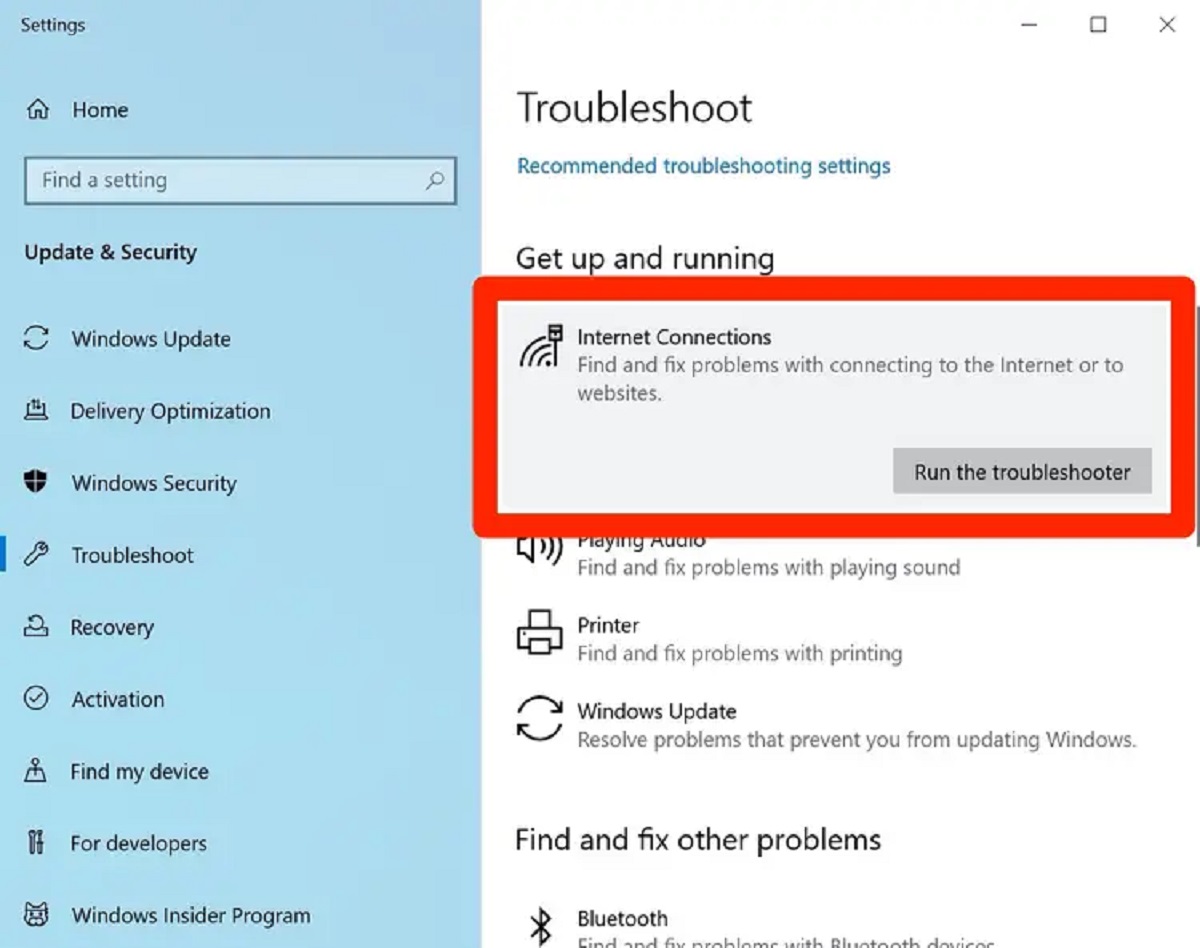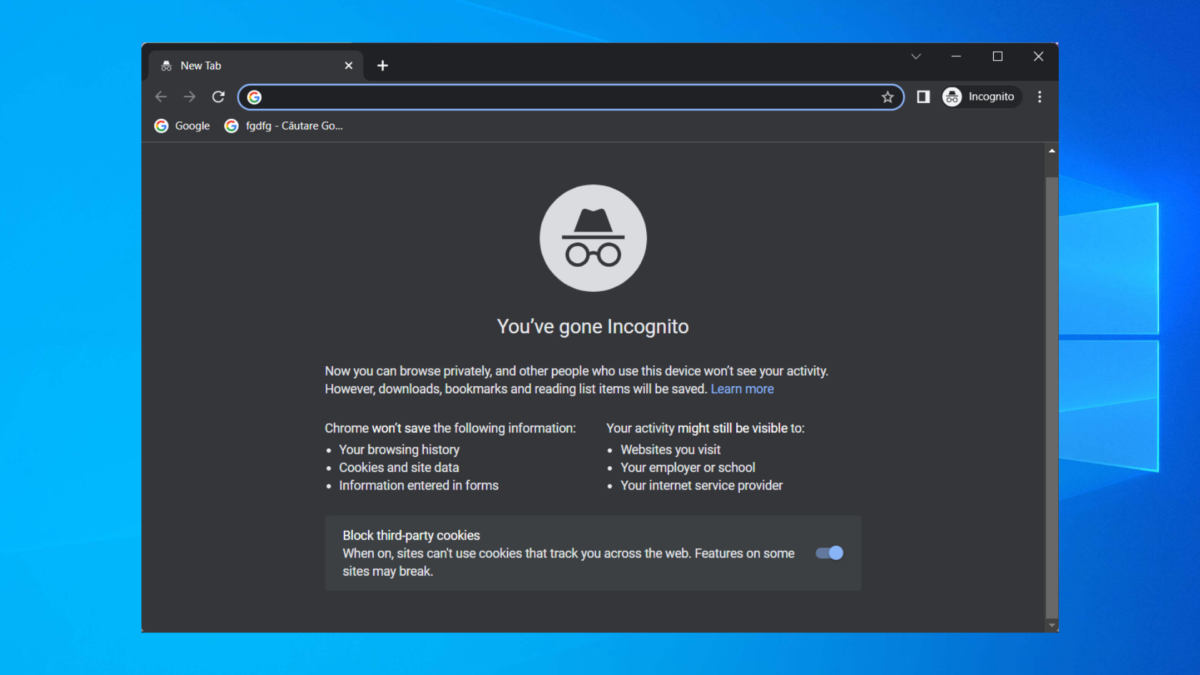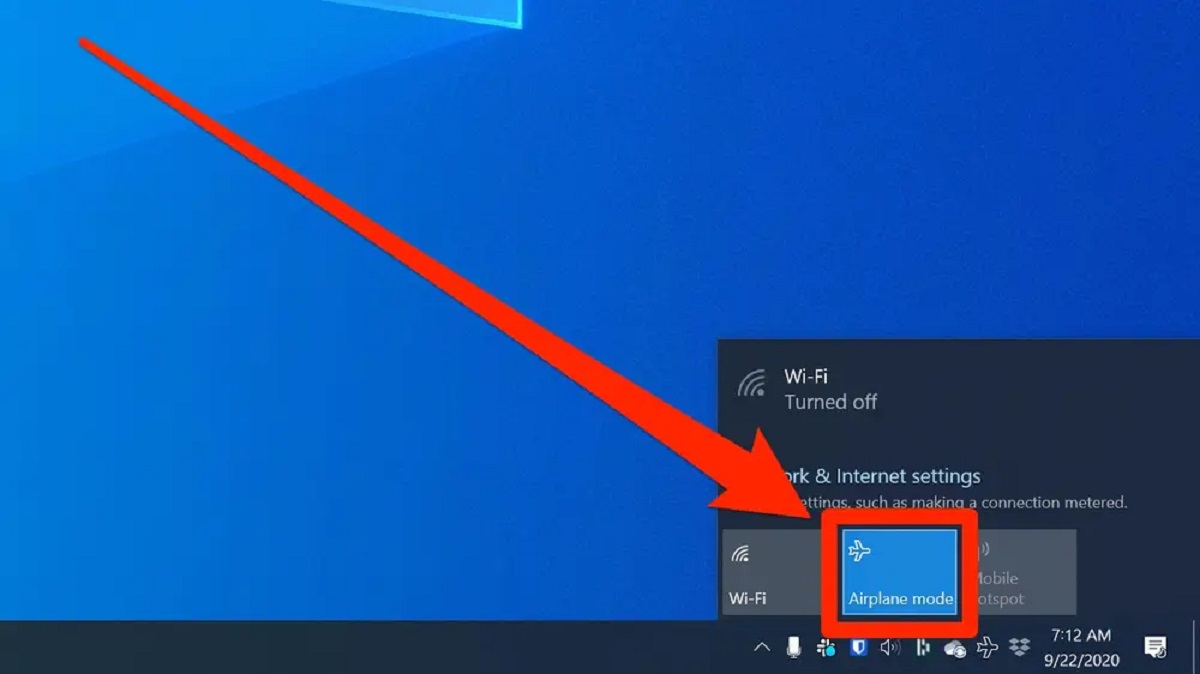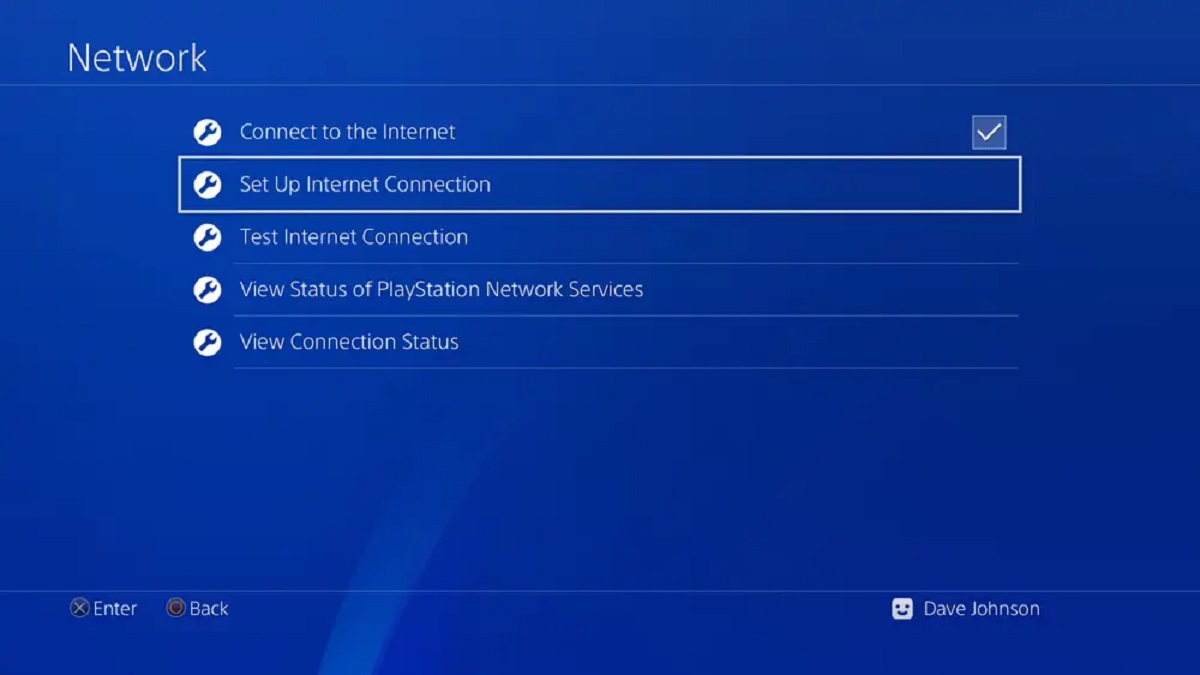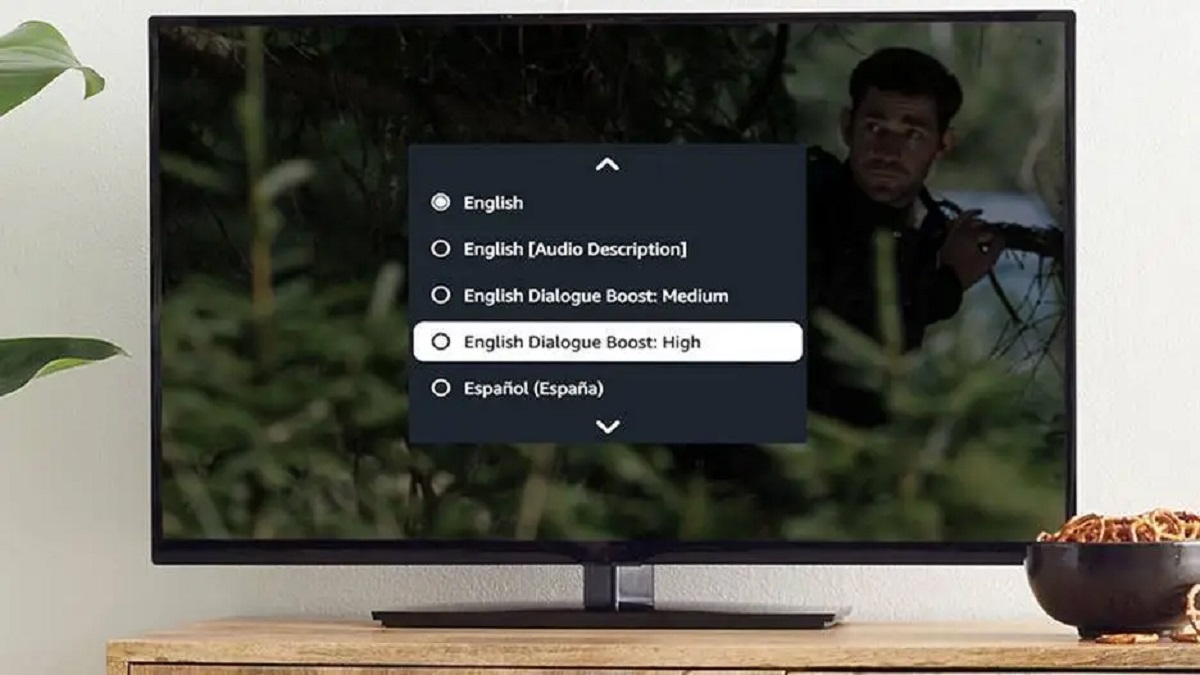Common Reasons Why You Can’t Turn Your WiFi On
Having trouble turning your WiFi on can be frustrating, especially when you rely on a stable internet connection. There are several common reasons why you may encounter this issue. Understanding these reasons can help you troubleshoot and resolve the problem quickly. Let’s explore some of the most frequent culprits:
- Device Airplane Mode is On: One of the simplest explanations is that your device’s Airplane Mode may be turned on. This mode disables all wireless connections, including WiFi. Check your device settings and toggle the Airplane Mode off if it’s active.
- WiFi Router Issues: Your WiFi router may be experiencing connectivity problems or power issues. Check if the router is properly connected to power and make sure all cables are secure. Additionally, try restarting the router by unplugging it for a few seconds and then plugging it back in.
- WiFi Adapter Problems: Your device’s WiFi adapter may be malfunctioning. To troubleshoot this, you can restart your device or disable and enable the WiFi adapter in the device settings. If the problem persists, you may need to update the adapter driver or contact your device manufacturer for further assistance.
- Software or Operating System Bugs: Software glitches or bugs in your device’s operating system may be causing the WiFi connectivity issue. Keep your device’s software up to date and install the latest updates to fix any known bugs or issues.
- Outdated Drivers for WiFi Adapter: Outdated or incompatible drivers for your WiFi adapter can lead to connectivity problems. Visit the manufacturer’s website or use a reliable driver update software to download and install the latest drivers for your device’s WiFi adapter.
- Security Software Blocks WiFi Connection: Your device’s security software, such as antivirus or firewall applications, may mistakenly block the WiFi connection. Temporarily disable these security programs and check if the WiFi connection becomes available.
- Problematic Network Settings and Configuration: Incorrect network settings or misconfigured WiFi preferences can prevent your device from connecting to WiFi networks. Double-check your WiFi settings and ensure that the network details, such as SSID and password, are entered correctly.
- Battery Saving Mode Interference: Some devices have power-saving modes that disable certain features, including WiFi, to conserve battery life. Check your device’s battery settings and disable any power-saving options that may be affecting the WiFi functionality.
- Overheating Device: Overheating can cause various issues, including WiFi connectivity problems. If your device feels excessively hot, turn it off, allow it to cool down, and then try turning the WiFi back on.
- Physical Damage to WiFi Hardware: Physical damage to the WiFi adapter or the device’s hardware can disrupt the WiFi connection. Check for any visible damage, and if necessary, consult a professional technician for repairs.
- Interference from Other Devices: Other electronic devices in close proximity, such as cordless phones or microwave ovens, can interfere with the WiFi signal. Move your device away from such sources of interference or try changing the WiFi channel in the router settings.
- Wrong Password or Security Key: Double-check that you are entering the correct password or security key when attempting to connect to a WiFi network. Pay attention to uppercase and lowercase letters, as WiFi passwords are case-sensitive.
By identifying and troubleshooting the common reasons why you can’t turn your WiFi on, you can effectively resolve the issue and regain your internet connection without unnecessary frustration.
Device Airplane Mode is On
If you’re unable to turn your WiFi on, the first thing you should check is whether the Airplane Mode is turned on your device. Airplane Mode is a setting that disables all wireless connections, including WiFi, to comply with flight regulations. It is intended to ensure that no wireless signals interfere with the aircraft’s communication systems.
Accidentally leaving your device in Airplane Mode can happen, causing you to think your WiFi isn’t working when it’s actually just turned off. To check if Airplane Mode is enabled, go to your device settings and look for the Airplane Mode option. On most devices, this can be found in the quick settings menu or the network settings section. Toggle the switch to turn it off if it’s activated.
Keep in mind that the location of the Airplane Mode switch may vary depending on the device’s operating system and manufacturer. It’s a good idea to consult your device’s user manual or perform a quick online search for specific instructions if you’re having trouble finding it.
Sometimes, turning Airplane Mode off and on again can resolve WiFi connectivity issues. It’s possible that the switch may have become stuck or the software may have encountered a temporary glitch. By toggling Airplane Mode, you’re effectively resetting the wireless connections on your device.
If turning off Airplane Mode doesn’t solve the problem, ensure that you’ve properly scanned for available WiFi networks and attempt to connect again. If the issue persists, move on to the next troubleshooting steps.
WiFi Router Issues
If you’re unable to turn on your WiFi, one of the possible causes could be issues with your WiFi router. A WiFi router is responsible for transmitting the wireless signal that allows your device to connect to the internet. Here are some common router-related problems that you may encounter:
Power Issues: Ensure that your WiFi router is properly plugged into a power source and turned on. Sometimes, power cords can become loose or accidentally unplugged. Check the power indicator lights on the router to verify if it is receiving power.
Connectivity Problems: If your router is experiencing connectivity issues, restarting it can often resolve the problem. Simply unplug the power cord from the router, wait for a few seconds, and then plug it back in. Give the router a few minutes to restart and establish a connection.
Interference: Other electronic devices in your home or in close proximity to the router, such as cordless phones or microwave ovens, can interfere with the WiFi signal. Ensure that your router is placed in an open area, away from potential sources of interference. Changing the WiFi channel in the router settings can also help mitigate interference issues.
Outdated Firmware: Like any other piece of technology, WiFi routers require regular firmware updates to ensure optimal performance. Check the manufacturer’s website for any available firmware updates and follow the instructions to update your router’s firmware. Outdated firmware can cause connectivity problems and other issues.
Router Configuration: Incorrect router settings or misconfigured network preferences can prevent your device from connecting to the WiFi network. Access the router’s administration page by typing its IP address in a web browser and ensure that all settings, including the network name (SSID) and password, are entered correctly.
If you’ve confirmed that the router is functioning properly, but you still can’t turn on your WiFi, you may need to consider other potential causes, such as issues with your device’s WiFi adapter or software bugs. Troubleshooting steps will vary depending on the specific device, so consult the manufacturer’s instructions or seek further assistance if necessary.
WiFi Adapter Problems
If you’re facing difficulties turning on your WiFi, it’s possible that your device’s WiFi adapter is experiencing problems. The WiFi adapter is a hardware component that allows your device to connect to WiFi networks. Here are some common WiFi adapter issues that might be causing the problem:
Restart Your Device: A simple troubleshooting step is to restart your device. Sometimes, a temporary glitch or software error can affect the functionality of the WiFi adapter. By restarting your device, you can potentially resolve the issue.
Disable and Enable the WiFi Adapter: If restarting your device doesn’t work, try disabling and then re-enabling the WiFi adapter. To do this, go to your device settings and navigate to the network or WiFi section. Find the option to disable the WiFi adapter and wait a few seconds before enabling it again. This action forces the adapter to reset and may help rectify any issues.
Update the WiFi Adapter Driver: Outdated or incompatible WiFi adapter drivers can cause connectivity problems. To update the driver, you can visit the manufacturer’s website and search for the latest driver version suitable for your specific device model and operating system. Once downloaded, follow the installation prompts to update the driver. This can address any compatibility issues and improve the functionality of the WiFi adapter.
Contact Device Manufacturer: If you’ve tried the previous steps and your WiFi adapter still isn’t working, it might be necessary to reach out to the manufacturer’s customer support. They can provide further assistance, troubleshoot specific device-related issues, or guide you through advanced troubleshooting steps.
It’s important to keep in mind that the steps to troubleshoot WiFi adapter problems may vary depending on the device and operating system you’re using. Consult your device’s user manual or the manufacturer’s support documentation for detailed instructions on troubleshooting WiFi adapter issues.
If after addressing WiFi adapter problems your WiFi still won’t turn on, there may be other factors at play. Proceed to check for software or operating system bugs or consider updating drivers for other devices on your device to ensure everything is running smoothly.
Software or Operating System Bugs
If your WiFi won’t turn on, it’s possible that software or operating system bugs are causing the issue. Software glitches and system bugs can impact the functionality of your device’s WiFi. Here’s what you can do to address this problem:
Keep Your Software Up to Date: Regularly updating your device’s software and operating system is essential for optimal performance and bug fixes. Check for available updates in your device’s settings or system preferences and install them. These updates often address known issues, including WiFi connectivity problems.
Restart Your Device: A simple restart can sometimes resolve temporary software glitches. Restarting your device clears the system cache and refreshes the software, potentially fixing any bugs affecting your WiFi. Try turning off your device, waiting a few seconds, and then turning it back on.
Reset Network Settings: Resetting your device’s network settings can often resolve software-related WiFi issues. Keep in mind that this action will erase saved WiFi networks and their passwords, so you’ll need to reconnect to your preferred networks afterward. To reset network settings, go to your device’s settings and look for the network or WiFi section. Find the option to reset network settings and follow the prompts.
Perform a Factory Reset: If the previous steps haven’t resolved the issue, you may need to perform a factory reset. This action restores your device to its original factory settings, erasing all data and settings. Before doing so, make sure to back up your important files and data. To initiate a factory reset, go to your device’s settings, look for the reset or backup and restore section, and follow the instructions provided.
Contact Customer Support: If the problem persists after trying the above troubleshooting steps, it may be necessary to contact the customer support of your device’s manufacturer or look for support forums online. They can provide further assistance and guide you through more advanced troubleshooting methods specific to your device and its operating system.
Software and operating system bugs can be frustrating, but they’re often addressed through updates and basic troubleshooting. By keeping your software up to date and following the recommended steps, you can increase the chances of resolving WiFi connectivity issues.
If the WiFi still won’t turn on, continue troubleshooting by checking for outdated drivers for your WiFi adapter, investigating potential security software interference, or examining network settings and configurations.
Outdated Drivers for WiFi Adapter
If you’re unable to turn on your WiFi, outdated drivers for your WiFi adapter may be the culprit. Device drivers act as a bridge between the hardware and the operating system, ensuring proper communication and functionality. Here’s what you can do to address this issue:
Update the WiFi Adapter Drivers: Outdated or incompatible drivers can cause connectivity problems. It’s essential to have the latest drivers installed for your WiFi adapter to ensure optimal performance. To update the drivers, you have a few options:
- Visit Manufacturer’s Website: Go to the website of your device’s manufacturer and navigate to the support or downloads section. Look for the latest drivers available for your specific device model and operating system. Download the driver package and follow the instructions provided to install the updated drivers.
- Use Device Manager (Windows): On Windows devices, you can update drivers through the Device Manager. Access the Device Manager by right-clicking on the Start menu and selecting “Device Manager.” Expand the “Network adapters” category, right-click on your WiFi adapter, and choose “Update driver.” Select the option to search automatically for updated driver software, and let Windows find and install the latest drivers for your WiFi adapter.
- Use Software Update Tools: Some devices or manufacturers provide dedicated software or update tools that can automatically scan for and install driver updates. Check if such tools are available for your device and use them to update the WiFi adapter drivers.
After updating the drivers, restart your device to ensure the changes take effect. This step can resolve driver-related issues and restore the functionality of your WiFi adapter.
It’s also worth mentioning that not all devices allow for manual driver updates. Some rely on automatic system updates to manage driver installations. In such cases, keeping your operating system up to date can help ensure that your WiFi adapter drivers are current.
If updating the drivers doesn’t resolve the issue and you’re still unable to turn on your WiFi, consider performing further troubleshooting steps such as checking for security software interference, reviewing network settings, or seeking assistance from customer support.
Security Software Blocks WiFi Connection
If you’re experiencing issues turning on your WiFi, there’s a possibility that your device’s security software is blocking the connection. Security applications, such as antivirus programs and firewalls, are designed to protect your device from potential threats. However, these programs can sometimes mistakenly block legitimate WiFi connections. Here’s what you can do to address this problem:
Temporarily Disable Security Software: The first step is to temporarily disable any security software running on your device. Locate the security software icon in the system tray or taskbar, right-click on it, and select the option to disable or pause protection. Keep in mind that the specific steps may vary depending on the software you’re using.
Attempt to Connect to WiFi: Once you’ve disabled the security software, try turning on your WiFi and reconnecting to an available network. If the issue persists, it’s likely that the security software isn’t causing the problem. If you can now connect to WiFi, proceed to the next troubleshooting steps.
Adjust Security Settings: If disabling the security software allows you to connect to WiFi, you may need to adjust the security settings. Access the security software’s settings or preferences menu and look for options related to network or WiFi protection. Ensure that the settings are configured to allow WiFi connections or add trusted networks to an exception list.
Consider Alternative Security Software: If the security software continues to interfere with your WiFi connection despite adjusting the settings, you may want to consider alternative security software. Research and choose a reputable security solution that is known to be compatible with WiFi connections and offers reliable protection.
Keep in mind that maintaining cybersecurity is crucial, so it’s important to have some form of security software protecting your device. However, if the software is consistently blocking your WiFi connection, it may be causing more inconvenience than benefit. Be sure to strike a balance between security and usability.
If disabling or adjusting the security software doesn’t resolve the issue, consider checking network settings and configurations or seeking assistance from the security software’s support team. They can provide further guidance tailored to the specific security software you’re using.
Problematic Network Settings and Configuration
If you’re unable to turn on your WiFi, it’s possible that there are problematic network settings or a misconfigured WiFi configuration on your device. Incorrect settings can prevent your device from connecting to WiFi networks. Here are a few troubleshooting steps you can take to address this issue:
Double-Check Network Settings: Begin by verifying that your device’s network settings are correct. Check the WiFi settings on your device and ensure that the network name (SSID) and password are entered accurately. Mistyping the password or using incorrect capitalization can prevent your device from connecting to the WiFi network.
Remove Existing WiFi Networks: If you’re still having trouble connecting to WiFi, try removing any saved network profiles on your device. These profiles may contain outdated or incorrect network information. In your device settings, navigate to the WiFi section and look for an option to manage or forget network connections. Delete any saved WiFi networks, and then attempt to reconnect to the desired network.
Restart Your Router: Sometimes, restarting your WiFi router can help resolve network configuration issues. Turn off the router, unplug it from the power source, and wait for about 30 seconds. Plug it back in and let it restart. After the router fully restarts, try connecting your device to the WiFi network again.
Reset Router Settings: If the previous steps haven’t resolved the issue, you may need to reset your router’s settings to default. This action will erase any customized settings you’ve made, so it’s important to note down any necessary information (such as ISP settings) before proceeding. Consult your router’s user manual or the manufacturer’s website for instructions on how to perform a factory reset.
Consult with Network Administrator: If you’re attempting to connect to a WiFi network in a workplace, school, or any other organization, it’s possible that there are specific network settings or security protocols in place. In such cases, reach out to the network administrator or IT department for assistance. They can provide the necessary credentials or guidance to help you connect to the network successfully.
By double-checking network settings, removing saved WiFi networks, restarting your router, or resetting router settings, you can address potential configuration issues and improve your chances of successfully turning on your WiFi. If you’re still experiencing problems, consider checking for battery-saving mode interference or investigating other possible causes.
Battery Saving Mode Interference
If you’re having trouble turning on your WiFi, battery-saving mode interference could be the reason. Many devices offer battery-saving modes to conserve energy and extend battery life. However, these modes often restrict certain features, including WiFi connectivity. Here’s how you can address this interference:
Check Battery Saving Settings: Go to your device settings and look for the battery or power-saving section. Verify if any battery-saving mode is enabled and review its settings. Some devices offer different levels of battery-saving modes, such as “Performance” or “Optimized.” Switch to a mode that allows WiFi usage, or disable the battery-saving mode entirely if it’s not necessary.
Disable Power-Saving Features: In addition to battery-saving mode, devices sometimes have individual power-saving features that can affect WiFi connectivity. Review your device’s settings for any specific power-saving features related to networking or WiFi. Disable these features to ensure that WiFi isn’t being restricted by energy-saving measures.
Charge Your Device: If your device’s battery is critically low, it may automatically enter a power-saving mode that limits functionality, including WiFi. Connect your device to a power source and allow it to charge for a while. Once the battery is sufficiently charged, attempt to turn on the WiFi again. Charging the device may resolve the interferences caused by low battery levels.
Restart Your Device: Sometimes, a simple restart can rectify temporary glitches or conflicts with battery-saving mode. Restart your device and attempt to turn on the WiFi after it powers back on. This action clears the system cache and may resolve any issues related to the battery-saving mode interfering with WiFi connectivity.
It’s important to note that while battery-saving mode can help conserve energy, it’s advisable to use it when necessary and disable it when you require regular WiFi connectivity. Balancing power-saving measures with your WiFi needs is essential to ensure a seamless and reliable internet experience.
If you’ve tried the above steps and are still experiencing difficulties turning on your WiFi, consider investigating other possible causes such as overheating, physical damage, or interference from other devices. Don’t hesitate to seek further assistance if the problem persists.
Overheating Device
If you’re unable to turn on your WiFi, it’s worth considering whether your device is overheating. Overheating can cause various issues, including problems with WiFi connectivity. Here’s what you should do if you suspect that overheating is the culprit:
Allow Your Device to Cool Down: If your device feels excessively hot to the touch, it’s important to let it cool down before attempting to turn on the WiFi again. Turn off your device and remove it from any heat sources or direct sunlight. Place it in a cool, well-ventilated area and wait for it to reach a normal operating temperature.
Check for Blocked Air Vents: Overheating can occur when airflow to your device’s internal components is restricted. Inspect your device for any obstructions around the air vents, especially if you’re using it on a soft surface like a bed or a pillow. Make sure the air vents are clear and unobstructed to allow for proper cooling.
Avoid Intensive Tasks: Performing resource-intensive tasks, such as running multiple apps or playing graphics-intensive games, can generate excessive heat. Temporarily refrain from performing such tasks until your device cools down. This can help prevent further overheating issues and improve WiFi connectivity.
Clean Dust and Debris: Accumulated dust and debris can hinder proper airflow within your device, leading to overheating. Use compressed air or a soft brush to gently clean the vents and remove any dust particles. Be sure to follow the manufacturer’s guidelines and precautions when cleaning your device.
Consider Cooling Accessories: If you frequently encounter overheating issues with your device, you may want to consider using cooling accessories, such as cooling pads or laptop coolers. These accessories help dissipate heat and can contribute to maintaining optimal operating temperatures.
Overheating can impact the performance and functionality of your device, including WiFi connectivity. By taking steps to cool down your device and addressing any airflow restrictions, you can mitigate overheating problems and potentially resolve WiFi issues. However, if the problem persists, it’s advisable to seek further assistance or consider consulting a professional technician.
Physical Damage to WiFi Hardware
If you’re experiencing difficulties turning on your WiFi, it’s important to consider the possibility of physical damage to the WiFi hardware. Physical damage can occur due to accidents, mishandling, or wear and tear over time. Here are the steps you can take to address this issue:
Inspect the WiFi Hardware: Carefully examine your device’s WiFi hardware, including the WiFi adapter or the wireless module built into the device. Look for any visible signs of damage, such as bent or broken connectors, damaged cables, or loose components. Physical damage can disrupt the WiFi signal and prevent the hardware from functioning properly.
Replace Damaged Cables or Components: If you identify any physical damage to the WiFi hardware, it may be necessary to replace the damaged components. Check if the damaged part is replaceable and purchase a compatible replacement from the device manufacturer or an authorized service center. Follow manufacturer guidelines or seek professional help to ensure proper installation.
Consult a Professional Technician: If you’re unsure about how to identify or replace the damaged WiFi hardware, it’s recommended to consult a professional technician or contact the device manufacturer for assistance. They can assess the situation, provide expert guidance, or perform the necessary repairs to restore WiFi functionality.
Consider External WiFi Adapters: In some cases, physical damage to the built-in WiFi hardware may require extensive repairs or replacements. As an alternative, you may consider using an external WiFi adapter that can be connected to your device via USB or other relevant ports. These adapters can provide a functioning WiFi connection without relying on the built-in hardware.
It’s crucial to handle your devices with care and take preventative measures to minimize the risk of physical damage. However, accidents can happen, and wear and tear are inevitable over time. By identifying and addressing any physical damage to the WiFi hardware, you can increase the chances of restoring WiFi connectivity. If the problem persists, consider exploring other potential causes, such as interference from other devices or network issues.
Interference from Other Devices
If you’re unable to turn on your WiFi, it’s important to consider the possibility of interference from other devices. The signals emitted by certain electronic devices can interfere with WiFi connectivity. Here are some steps you can take to address this issue:
Identify Potential Sources of Interference: Take note of the electronic devices or appliances in your vicinity that may be causing interference. Common sources include cordless phones, microwave ovens, baby monitors, and Bluetooth devices. Additionally, neighboring networks operating on the same channel can also cause interference.
Move Away from Interfering Devices: If possible, move your device away from potential sources of interference. Increasing the distance between your device and the interfering device can help reduce the impact on WiFi connectivity. In the case of neighboring networks, changing your WiFi channel in the router settings can help mitigate interference issues.
Power Off or Disable Interfering Devices: Temporarily power off or disable the interfering devices to determine if they are indeed the cause of WiFi connectivity issues. For example, if you suspect that a cordless phone is causing interference, try turning it off and see if that resolves the problem. If it does, consider using a different frequency for the cordless phone or repositioning it away from the WiFi router.
Adjust WiFi Router Location: The placement of your WiFi router plays a significant role in minimizing interference. Positioning the router in an open area, away from walls or obstructions, can help reduce the impact of interference. Experiment with different positions and orientations to find the optimal placement for your router.
Consider WiFi Range Extenders: If you have areas of poor WiFi coverage in your space, using WiFi range extenders can help amplify the signal and improve connectivity. These devices can expand the coverage area and mitigate the impact of interference from nearby devices.
By identifying potential sources of interference, adjusting the location of your WiFi router, and considering WiFi range extenders, you can reduce the impact of other devices on your WiFi connectivity. If you’ve addressed potential interference issues and are still unable to turn on your WiFi, consider investigating other potential causes, such as outdated drivers, network settings, or physical damage to the WiFi hardware.
Wrong Password or Security Key
If you’re unable to turn on your WiFi, one common and easily overlooked reason is entering the wrong password or security key. WiFi networks are secured with passwords or security keys to prevent unauthorized access. Here’s what you should do to address this issue:
Double-Check Password Accuracy: Ensure that you’re entering the correct password or security key for the WiFi network. WiFi passwords are case-sensitive, so pay attention to uppercase and lowercase letters. To verify the password, you can check the network settings on a device already connected to the WiFi network or contact the network administrator for the correct information.
Reset Router Password: If you’re certain that you have the correct WiFi password but still can’t turn on your WiFi, the router’s password might be incorrect. Factory reset your WiFi router by pressing the reset button (usually located at the back) for a few seconds. This action will revert the router’s settings to their default state, including the default password. Consult the router’s user manual or the manufacturer’s website for detailed instructions on how to reset the router.
Reconnect to WiFi Network: After resetting the router or confirming the correct password, you’ll need to reconnect your device to the WiFi network. Go to your device’s WiFi settings, select the desired network, and enter the correct password or security key. Ensure that you save the network settings to avoid having to re-enter the password each time you connect.
Consider Using a Network Management Tool: If you frequently face WiFi connection issues due to entering the wrong password or security key, you can use a network management tool or WiFi profile manager. These tools help you organize and manage your WiFi networks, allowing for easier switching between networks without the need to re-enter passwords every time.
If you still can’t turn on your WiFi after following the above steps, consider checking for potential router issues, such as connectivity problems, outdated firmware, or problematic network settings. Additionally, ensure that your device’s WiFi adapter is working correctly and that there are no other interfering factors affecting your WiFi connection.







